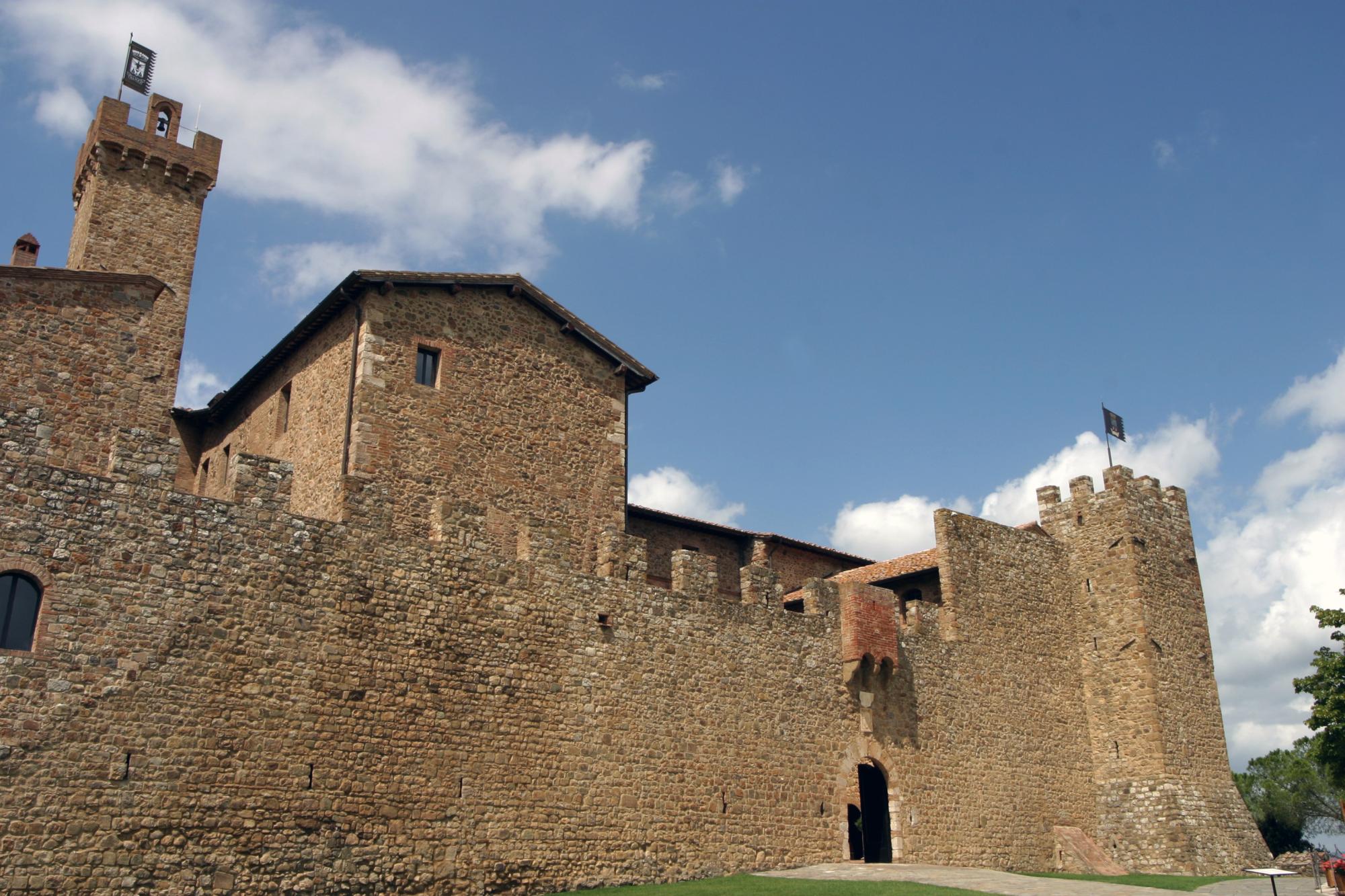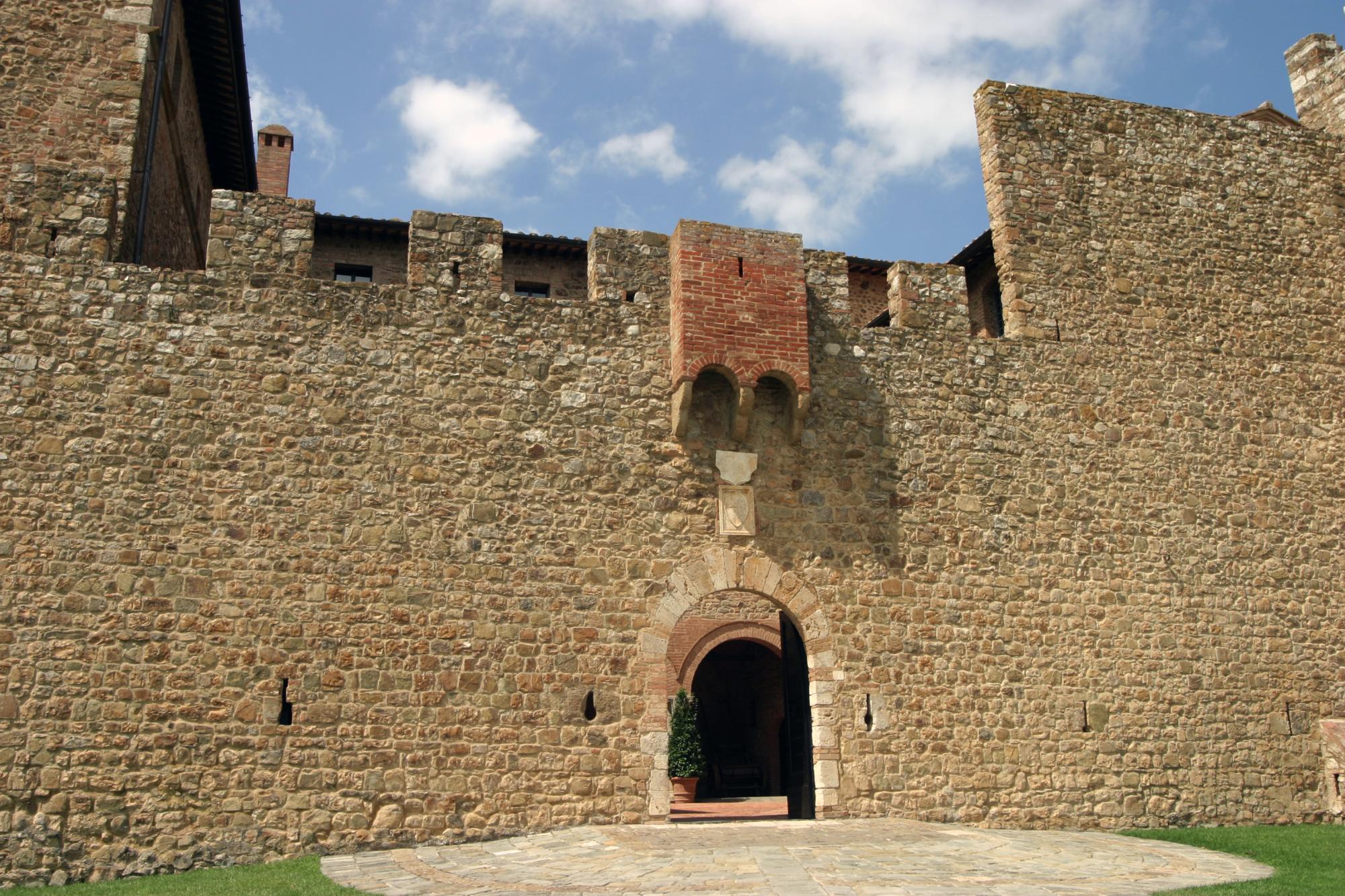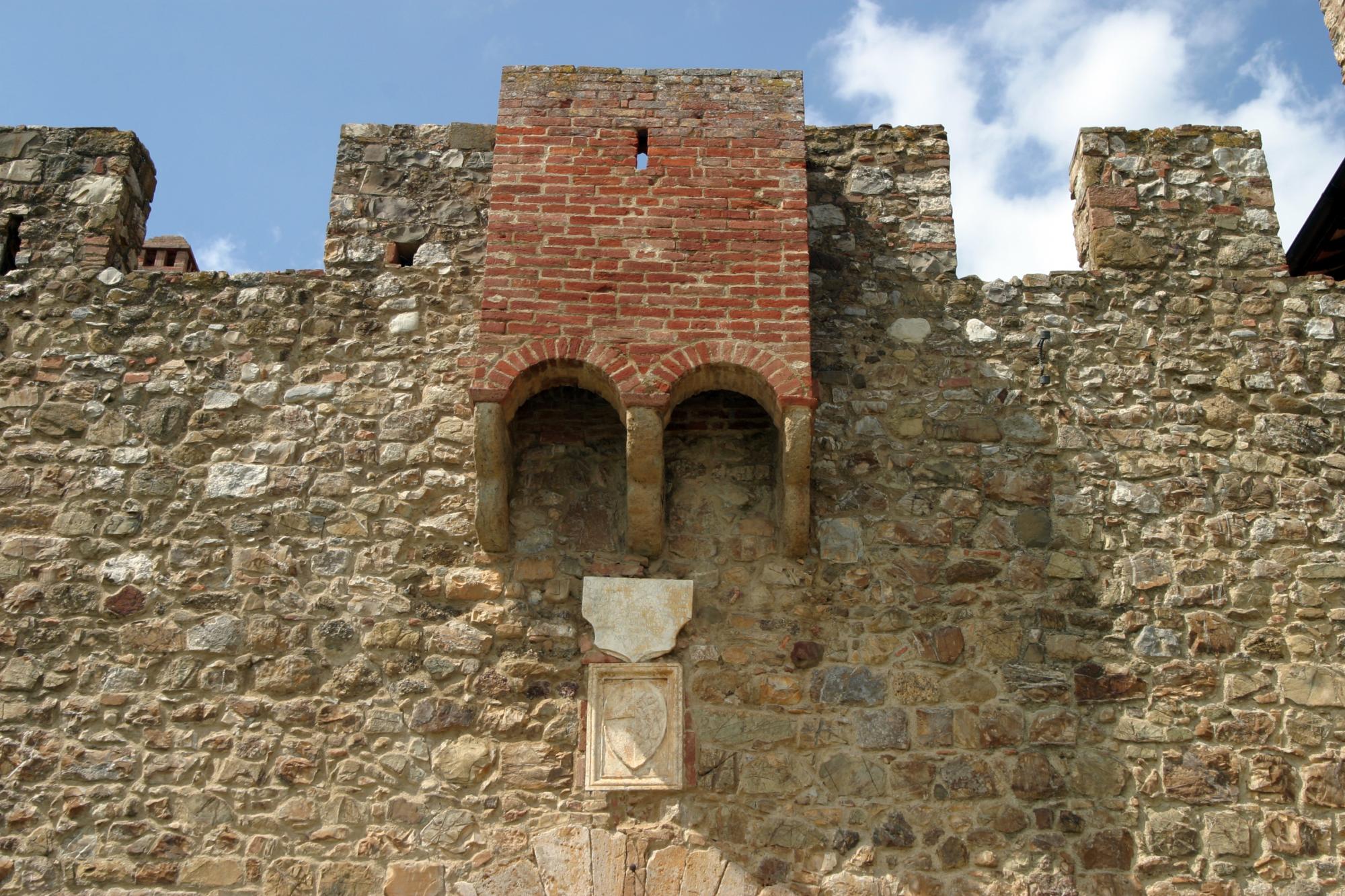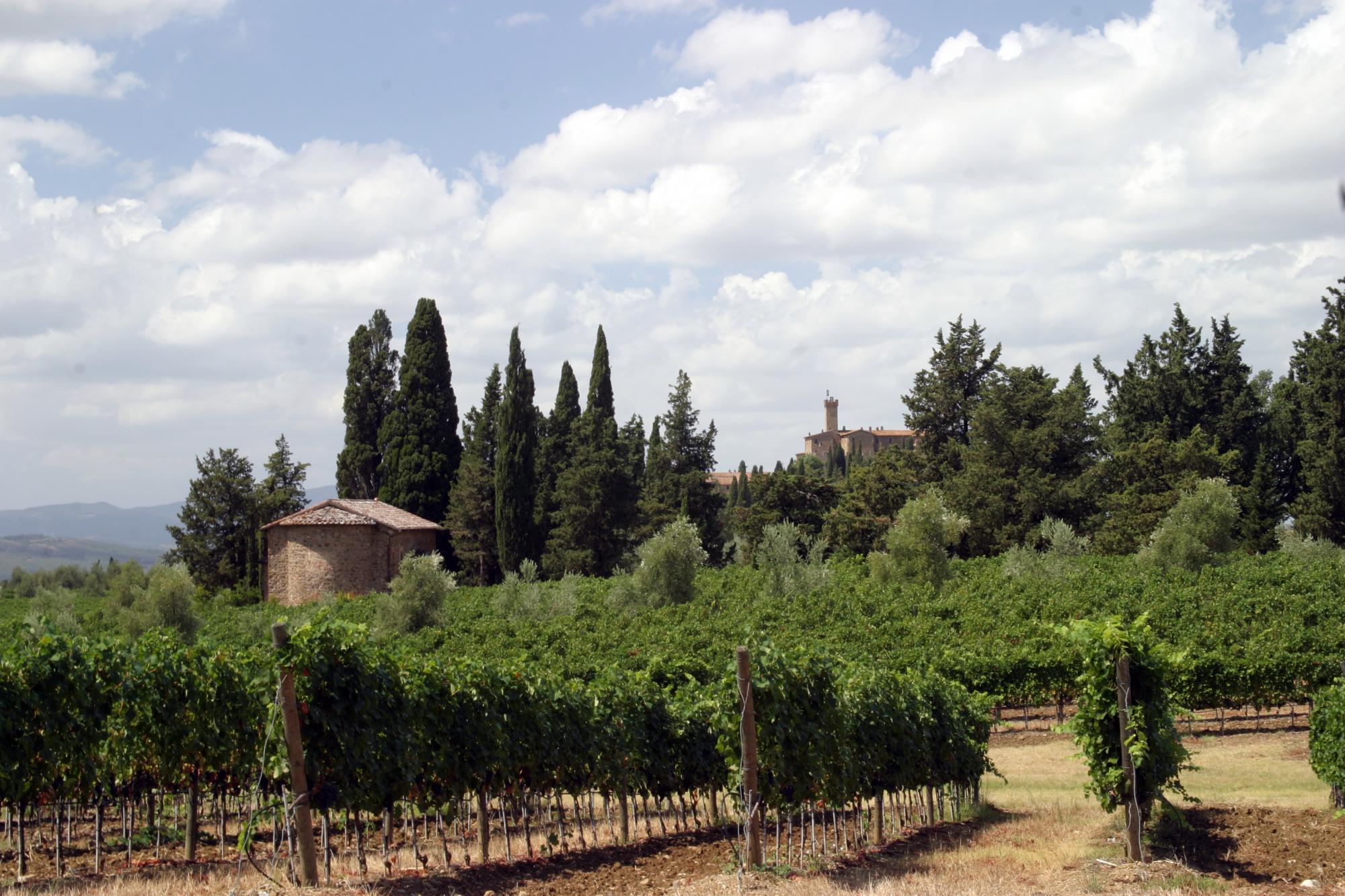



























How to reach
The castle, aka Castello Banfi, rises in the locality of Poggio alle Mura, near Montalcino (Siena). It accommodates the 'Museo del Vetro e del Vino'. From Montalcino, follow the signs for Grosseto and after few kilometres to Argiano/Poggio alle Mura.
History
The castle of Poggio alle Mura, now famous with the name Banfi Castle as property and representative center of this important vine-growing and wine producing company, was erected, in its current form, in 1438 on a hill near the confluence of the rivers Orcia and Ombrone. Its position, and the ancient history of the surrounding territory, let us suppose that the origin can even go back to the time of the Longobards, who probably erected here one of their watch towers. There are no proofs in the documentation of this theory, even though it is sure that the construction of the first fortified nucleus on this hill is antecedent to the year 1000. The first great widening of the castle dates back to the second half of the 13th century [just after the battle of Montaperti, 1260]. The written sources tell about Poggio alle Mura for the first time in 1377, indicating the castle between the properties of Francisco di Tommaso Colombini. After the above-mentioned reconstruction of 1438, Poggio alle Mura became one of the larger castles of the Sienese peasantry. Other works were carried out during the 17th century. A wing of the castle was mined during World War II and reconstructed within the recent magnificent restoration undertaken by the current property.
From Poggio alle Mura, it has always been easy to control the main roads of communication between Siena, Mount Amiata, and Maremma. This strategic position always placed the castle at the center of a skirmish between the Sienese Republic, which aimed to reach a vital outlet to the sea, the Aldobrandeschi, Lords of the territory, and Florence, fearing a too great commercial expansion of the enemy Siena and having an interest in closing every access to new logistic resources.
Between the owners of the castle, we count the families of the Tolomei and the Placidi, the Republic of Siena [that confiscated the castle to Ardello Placidi, accusing him of being a rebel, to give it to the Spedale di Santa Maria della Scala]. Today, the property is owned by Banfi SpA.
The study of the fortified complex is not simple because of the many architectonic manipulations undertaken in the centuries. The castle, with its irregular square shape, is articulated around a courtyard, three sides are occupied by different types of buildings, and the fourth is closed by a mighty walled curtain. On this side is the main gate, endowed with a breteche in bricks and stone.
A crenellated tower dominates the castle. Along the external perimeter of the walls, it is still possible, at some points, to notice their escarpment and the beautiful tower of the northern angle, which is unique in its original medieval aspect. On the north side is a secondary gate, now approachable thanks to a stone ramp [added in a later period] resting on two large arches. The courtyard 'of honour' is a splendid example of the architecture of the Renaissance [built up when the castle became 'palazzo'] with low arched holds up on octagonal pillars, a large fireplace, a domical vault, and one Medicean coat of arms of the 16th century, placed here after the fall of Montalcino. Is it still possible to notice some loopholes, today, located a little above the level of the ground. This testifies to the raising of the area around the walls; originally, the main gate was accessed by a removable ramp. The successive addition of other inner buildings created a second courtyard 'of service', lacking in decorations.